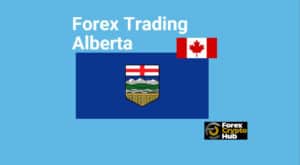Forex Trading vs Stock Trading For 2021
Forex trading and stock trading are the two most accessible financial markets for average retail investors. In most regions of the world, the average person can choose from dozens of forex brokers and stockbrokers; even our website features almost 30 brokers.
There is a difference between stock trading and investing in stocks. Investing is buying an asset and holding it for years and even decades to benefit from its long-term price appreciation. In contrast, trading is buying and selling goods for short term profits, typically over a timespan of a day or a week.
Traders typically use derivatives like contracts-for-difference (CFDs) and options or use margin trading accounts to get more exposure and potentially profit from smaller price movements during a single trading session. Derivatives let traders short-sell, meaning you can profit from prices falling, not just rising.
Supposing you have access to reliable online brokerages offering stocks and forex, how can you decide which one to trade? There are a few factors to consider; risk tolerance, investment horizon, the trading strategy that suits your personality, how much time you have to allocate and others.
This article explores the differences between trading forex and trading stocks and will help you determine which asset class is right for you.
Stocks Vs Forex Summary:
- Markets Hours
- Liquidity Stocks vs Forex
- Number of Tradable Instruments
- Stock and Forex Trading Leverage
- FX & Stock Trading Strategies
- Currency Risk
What is the Difference Between Stocks and Forex?
On the surface, it might seem the differences between stocks and forex are trivial. For example, the price of stocks and forex are influenced by supply and demand, bid and ask prices constantly rising and falling; the trading platforms look very similar with the same indicators and order types. However, there is a lot of difference between the two markets.
Market Hours
Stocks are only available to trade when the stock exchange is open.
Most stock exchanges are open during business hours in the country where it is located.
For example, the New York Stock Exchange is open Monday through Friday from 9:30 am to 4:00 pm Eastern Time, and the London Stock Exchange is open Monday through Friday from 8:00 am to 4:30 pm UK time.
Most exchanges are open for several hours per day, and some stock exchanges like the Tokyo Stock Exchange have a one-hour lunch break.[1]
Most stock exchanges have extended trading sessions that last for a couple of hours before and after the official opening and closing bell.
However, liquidity is much thinner during extended sessions. A major drawback of the stock market is that you can’t close positions when the market is closed.
Forex Market
In contrast, the forex market is open 24 hours a day, five days per week, excluding major bank holidays like Christmas Day and New Years Day.
The forex market opens at 8:00 am Monday in Sydney and closes at 5:00 pm Friday in New York. Therefore, the forex market is available at any time of the day.
However, just because the forex market is open doesn’t mean it’s always an optimal time to trade every currency.
For example, there is more liquidity for the Australian dollar versus Japanese yen during the Asian trading session than the Europe or US trading session.
Many traders find when the Europe and US sessions overlap the best time to trade.
That’s because when the regional trading sessions overlap, the markets are most active, and the prices are more volatile.
When two markets are open simultaneously, there are more participants, more volume and liquidity, news and events and therefore, more price volatility.
Liquidity Stocks vs Forex
Liquidity refers to how easily an asset can be sold.
For example, real estate is not considered a liquid asset because it can take several months to sell a property.
The forex market is the most liquid market in the world, as nothing is more liquid than cash itself.
The stock market, while considered liquid, isn’t as liquid as the Forex market.
It’s worth noting that not all currencies or stocks are as liquid as each other.
For example, the US dollar is more liquid than the Mexican peso, and Apple shares are more liquid than Titan Pharmaceuticals.
The average daily trading volume of the forex market is estimated to be $6.6 trillion, whereas the average daily volume of the global stock market was $63 billion in January 2021.
Number of Tradable Instruments in Stock & Forex Markets
Did you know there are over 80 stock exchanges, almost 50,000 companies listed worldwide, and over one thousand new companies listed in the first half of 2021?[2]
In the United States, there are 2,873 companies listed on the NASDAQ and 2,987 listed on the New York Stock Exchange, which are the two largest stock exchanges in the world by trading volume.[3]
In contrast, there are far fewer currencies than publicly listed companies.
According to the United Nations, there are 180 currencies, of which just 130 are free-floating currencies.
However, that does not mean there are only 130 currency pairs. A currency can be traded for one of many other currencies.
For example, the British pound can be traded against the Australian dollar (GBP/AUD), Canadian dollar (GBP/CAD), Swiss franc (GBP/CHF), Japanese yen (GBP/JPY), Norwegian krone (GBP/NOK), New Zealand dollar (GBP/NZD), Singapore dollar (GBP/SGD), US dollar (GBP/USD), Czech koruna (GBP/CZK) and other currencies.
In the forex trading market, currency pairs are categorised as majors, minors, exotics and crosses. The major currency pairs get the most attention and therefore have the most liquidity and tighter spreads.
Most brokers offer between 60 and 100 currency pairs because it isn’t viable to support too many.
Stock Trading Leverage vs Forex Trading Leverage
One of the main advantages of trading stocks and forex with derivatives is high leverage, which lowers capital requirements.
Although leverage is available for trading stocks, much more is available when trading forex.
Many brokers offer leverage on shares.
The amount offered is usually between 1:2 and 1:5, meaning between 50-20% margin is required to maintain a position.
Much lower margins are possible in the forex market due to the higher leverage offered by brokers.
Although many brokers are required not to exceed 1:30 leverage due to changing regulations, many brokers still offer 1:500 leverage.
With 1:500 leverage, it means margin requirements are 0.2% of the value of a position. Therefore all you need to trade a standard lot of 100,000 USD/JPY is $200.
Low and flexible margins help you use your capital more efficiently. There is no need to lock up thousands of dollars for several days just to make a few dollars. The fact that low investment and high profits with small price movements is possible in the forex market is one of the main attractions.
But keep in mind that leverage is often referred to as a double-edged sword; it can help achieve larger profits but can also lead to rapid losses.
FX Trading Strategies Vs Stock Trading Strategies
Different strategies are better suited for the stock market, and others are better for the forex market.
For example, stock traders can use the “buy and hold” strategy and wait until they sell their stocks at a higher price. They buy low, then hold their position while it grows over time.
Forex traders don’t have this luxury because of the risk of forex trading, making short-term trades more favourable.
Most forex traders use scalping and intraday trading strategies.
Currency Risk
When you trade stocks, you’re speculating on the value of a company quoted in the national currency where the stock exchange is based. If you’re trading stocks from a different country from where you reside, you’re exposed to currency risks.
For example, if you live in the UK and you’re trading US stocks, your profit doesn’t just depend on the value of the shares, but the value of GBP/USD when you close the position.
When you close a forex trade, the profit or loss is instantly converted into your account balance. Whereas when you trade forex, you’re exposed to the same risk but on a shorter-term basis, meaning the impact is less significant.
About This Article
Author: Mark Prosz
Sources of information and credits for this post include:
[1] https://www.japantimes.co.jp/news/2021/09/03/business/financial-markets/tse-longer-hours/
[2] https://www.world-exchanges.org/storage/app/media/H1%202021%20Market%20Highlights%20Final%20.pdf
[3] https://focus.world-exchanges.org/issue/march-2021/market-statistics




